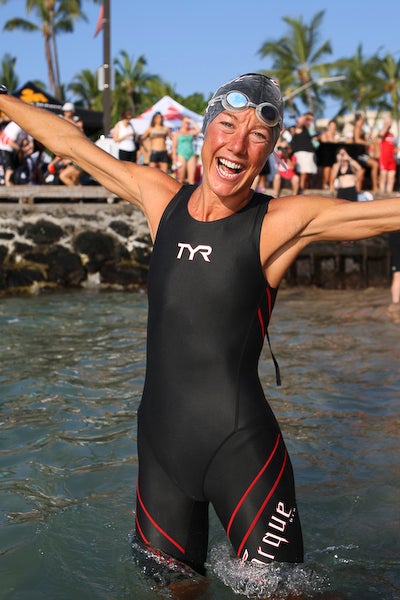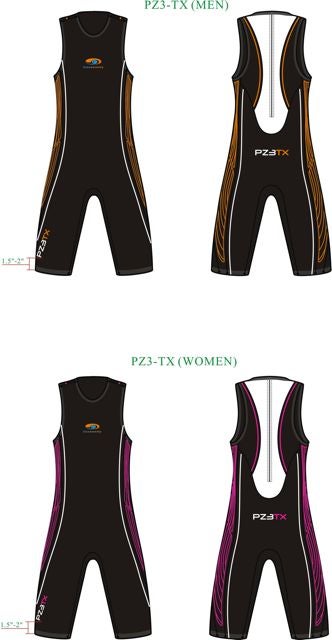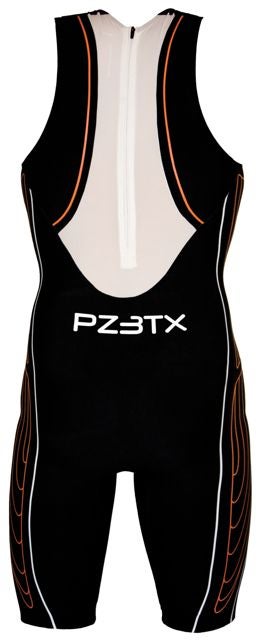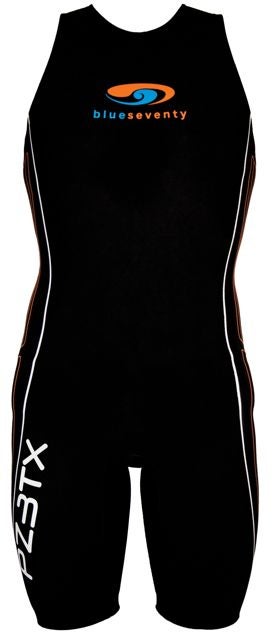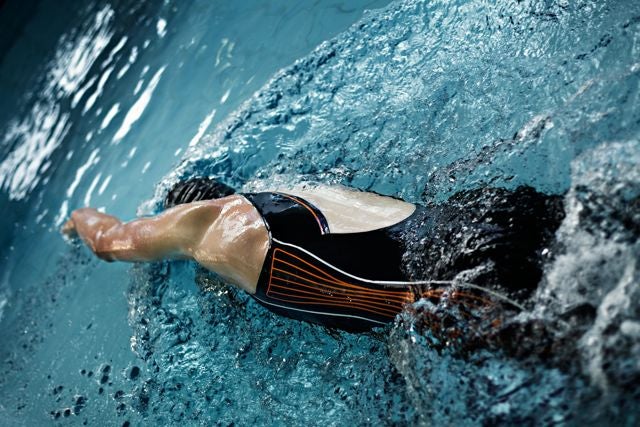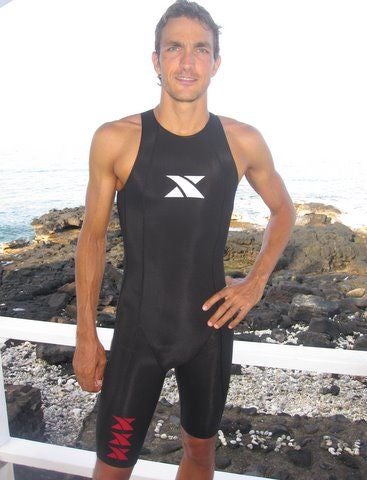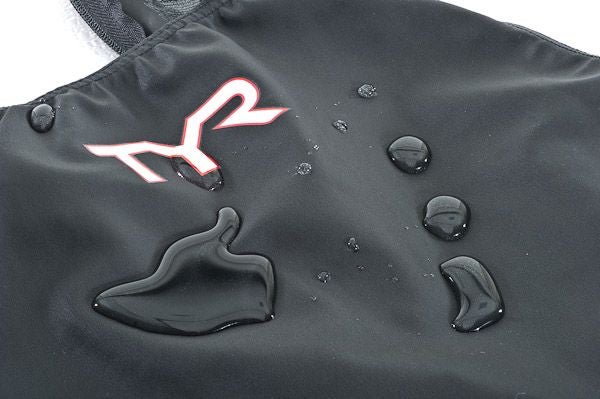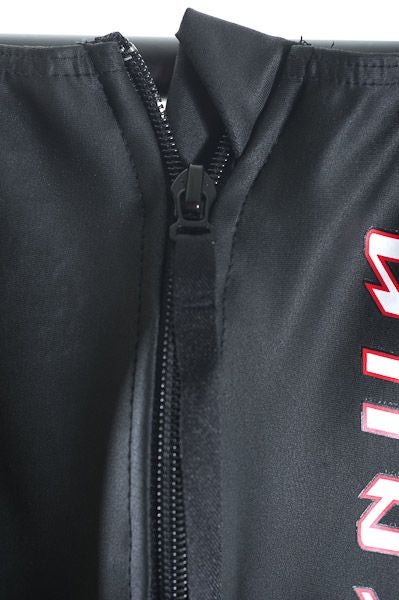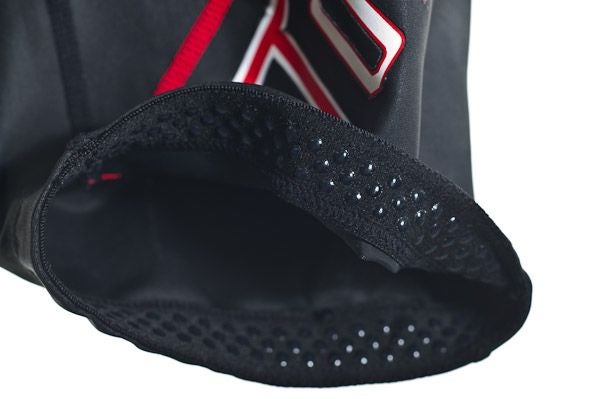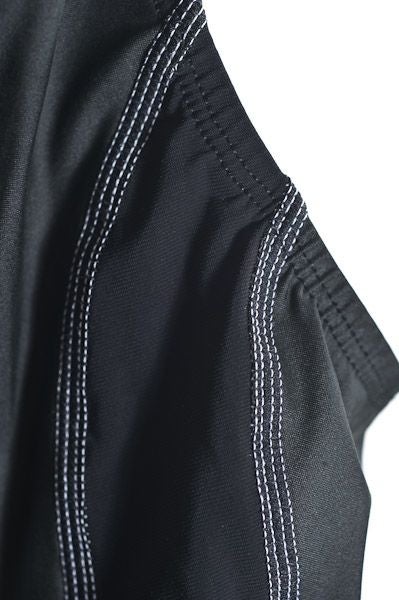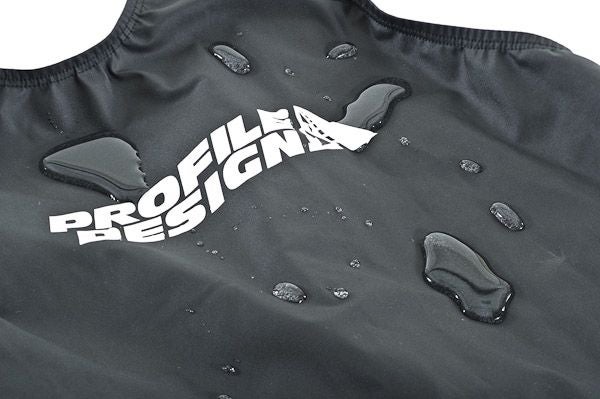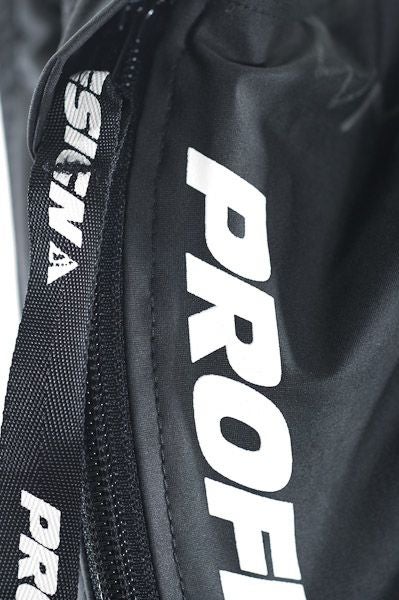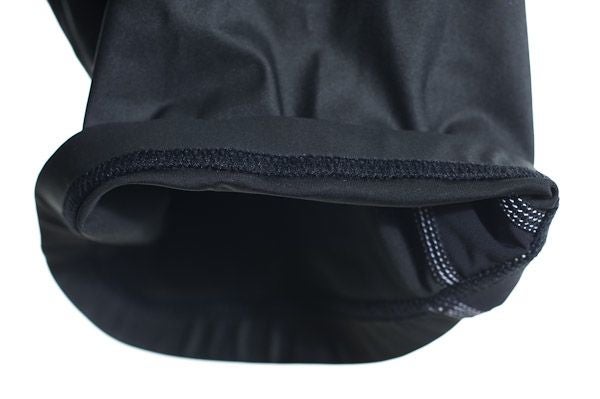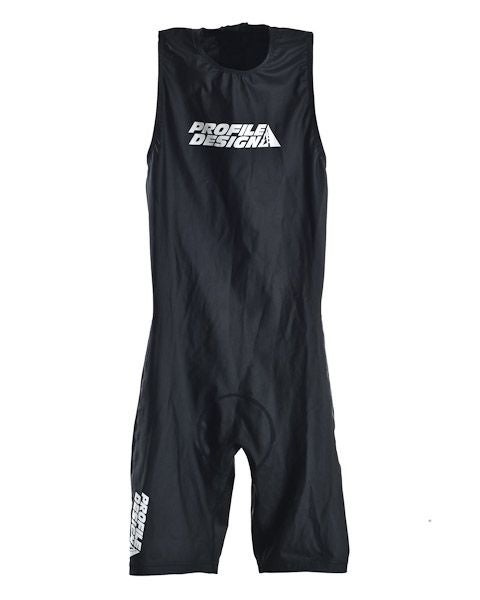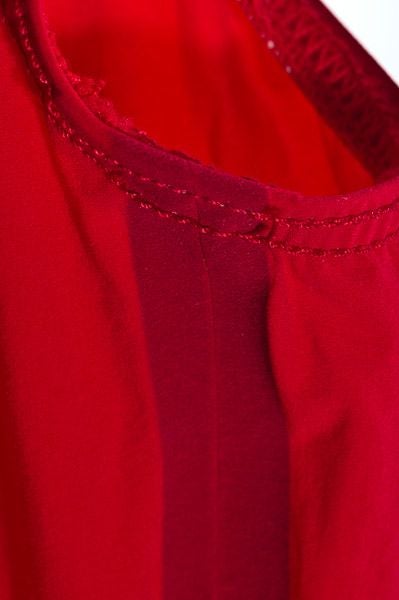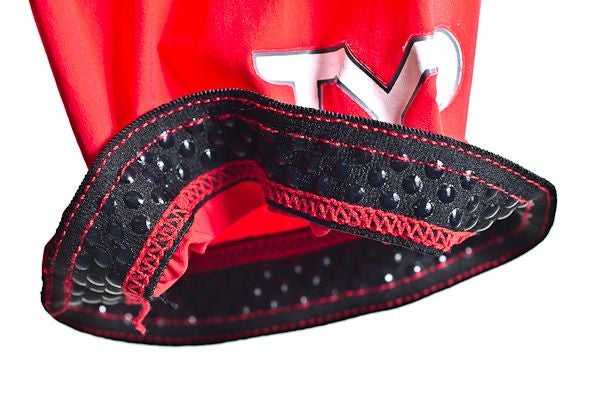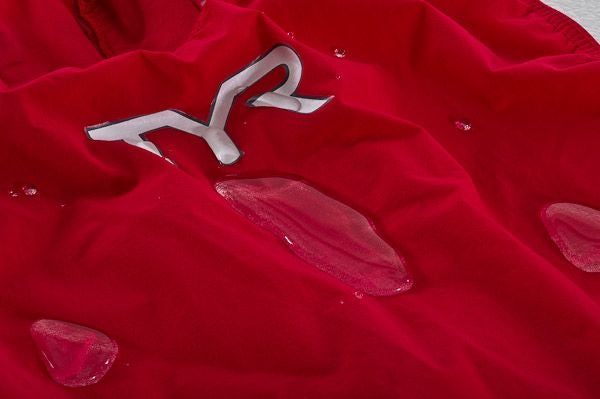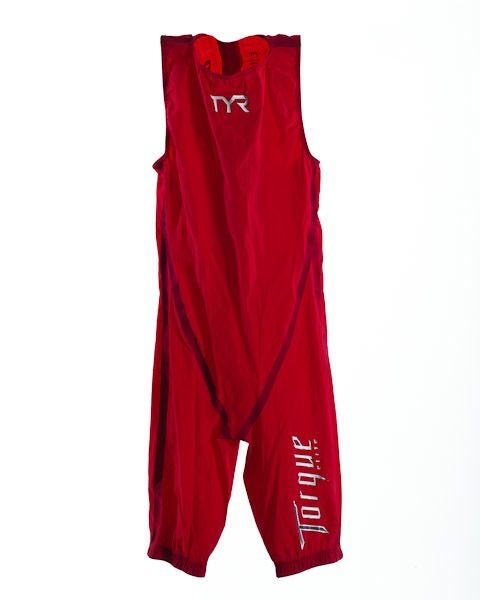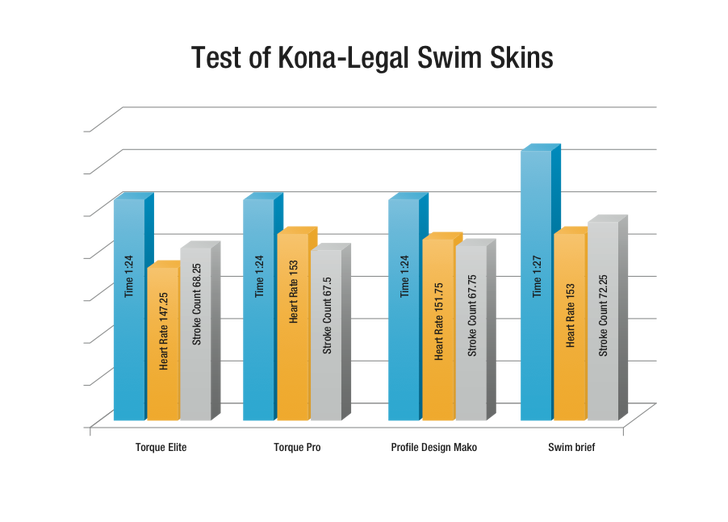New perk! Get after it with local recommendations just for you. Discover nearby events, routes out your door, and hidden gems when you sign up for the Local Running Drop.
Why swimskins might again influence the outcome of the Ironman World Championship.
Written by: Aaron Hersh
Wetsuits have always been illegal at the Ironman World Championship but swimskins—thin suits worn explicitly to make the swimmer faster—have helped decide the race once before, and they might influence the race again this year.
Normann Stadler has been one of the strongest cyclists in triathlon for more than a decade and he has the Kona bike split record (4:18:23, 26 mph) to prove it. He has placed in the top-4 at the Ironman World Championship on five different occasions, but he has lost significant time to the leaders during the swim every year, except one.
In 2006, the year he won his second title, Stadler exited the water just 30 seconds behind the fastest swimmers that were also contenders for the overall win. He rode away from the field and held off a hard-charging Chris McCormack during the run to win by just 71 seconds. It’s anyone’s guess if he would have been able to win the race had he not exited the water near the front of the race.
The following year he again found himself minutes down after the swim and failed to finish the race. Stadler didn’t discover once-in-a-career swim fitness in 2006. The difference between the swim that year and the rest of his career was a swimskin. He donned the Blue Seventy Pointzero 3 swimskin, which is made from a thin layer of rubberized material that reduces the friction between their body and the water. These suits are nearly identical to the ones worn by pool swimmers since the Beijing Olympics (which are now banned) while breaking world records at an unprecedented rate.These swimskins became universal equipment from 2007 through 2009 for every athlete with aspirations to win the race, so Stadler lost his advantage over the rest of the field. Ironman changed the swimwear rules this past summer with the goal of “ensuring a fair playing field” by outlawing these suits.
The rule banning swimskins like the Blue Seventy Pointzero 3 read:
Swimwear and swim apparel must be comprised of 100 percent textile material, such as nylon or lycra, and may not include rubberized material such as ployurethane or neoprene. Swimwear may not cover the neck or extend past the shoulders or knees.
Ironman’s Head of Officials, Jimmy Riccitello, says these rules, “place more emphasis on performance and function and less on technology.” The athletes would once again be competing evenly in 2010. Or so we thought.
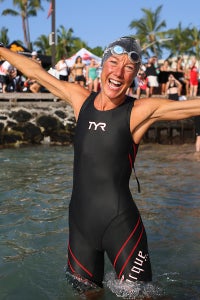
Every wetsuit manufacturer created a swimskin soon after Stadler’s success racing in the Pointzero 3 in 2006 and these new rules have banned the first generation of swimskins because they were constructed from Modtec, a rubberized material produced by the Yamamoto rubber company that makes the neoprene for the majority of wetsuit. These suits were all neutrally buoyant, but were fast for other reasons:
Their surface is coated with a material that reduces friction between the water and the swimmer.
The suits are so tight that they squeeze the swimmer into a smaller, more compact size, which reduces frontal area and, therefore, hydrodynamic drag.
A few companies realized that they could still create a suit that makes a swimmer faster without violating the new rules governing Ironman swims. The timeframe to create a suit to use at Kona this year was so short that some manufacturers, such as Orca, had their suits sent directly from the factory in the far east to their athletes without ever being seen by Orca employees. This second generation of swimskins has arrived abruptly, but not every manufacturer has one ready for Kona this year.
What are they?
Ironman has banned polyurethane and neoprene (which are smooth and buoyant) from clothing worn during Ironman races, so swimskin manufacturers got creative and used different materials for the construction of these second generation swimskins. There are two categories of suit; knit suits and woven suits.
Woven suits such as the Tyr Torque Elite, Profile Design Mako TXT and Xterra Velocity-M have a rough texture, similar to a parachute. They are extremely thin, light and are hydrophobic, which means they do not absorb water. The Torque Elite uses bonded, rather than sewn, seams to further smoothen the surface of the suit. The Mako TXT is slightly thicker than the Tyr and Xterra suits. It has a stretchy panel down the side of the body that helps the suit conform to the swimmer’s physique. The Velocity-M has compression panels that squeeze the swimmer into a more compact form and a break-away zipper that stays in place when the zipper tab is down, but opens freely when the tab is pushed upwards. This allows the suit to be removed without reaching for a cord to yank on the zipper.
We did not have the opportunity to swim in the Xterra Velocity-M, but the other two suits were hardly noticeable in the water. The Profile suit was tighter and we noticed the pressure on the chest. The Tyr suit didn’t trap any heat and didn’t constrict the swimmer in the slightest. It is see-through when wet.
Knit suits look and feel more like first generation swimskins. They are thicker and a little heavier than the woven suits. The Blue Seventy PZ3TX is a knit suit made of B70’s BLU-TX fabric. We did not have the opportunity to swim in the suit, but product developer Steve Nicholls says the material highly compressive yet extraordinarily elastic. Blue Seventy is one of the few (only?) manufacturers offering a swimskin specifically for women and men rather than one unisex suit.
The Tyr Torque Pro has a slippery coating that makes the suit feel almost slimy when wet. Tyr says this coating reduces friction with the water and we found this layer washes off after a couple thousand yards. The outer layer of this suit is hydrophilic, which means it absorbs water, and Tyr says this allows their fabric to achieve an extremely low coefficient of friction with the water. The inner layer is hydrophobic (doesn’t absorb water), which allows water to cycle past the swimmer so he isn’t warmed by his own body heat.
All of the suits we have seen so far use stitched rather than bonded seams at the neck, arm and leg openings. Bonded seams were in vogue two years ago because they allow the suit to lay flush against the body and create a more consistent surface than stitched seams, but they are also flimsy and easily stretch out after only a couple uses. The Tyr suits use silicone grippers to seat the legs and the Profile Design Mako TXT relies on the compressive fabric to hold the garment in place. Both techniques are effective.
Product test
We wanted to find out if the suits actually make a swimmer faster or if they are simply a gimmick. The results were conclusive.
We tested the suits against each other and against a swimmer without a swimskin by swimming 4×100 at race pace in each of the suits.
We designed the test to minimize the error caused by swimmer fatigue, stroke variation and inconsistent effort. The details of the test can be found here.
The subject swam an average of 2.5 seconds per 100 yards faster while wearing a swimskin than while wearing only a brief. 2.5 seconds per 100 yards translates to 1:36 over a 2.4-mile swim.
Heart rate was similar across the four conditions. This indicates that the subject was swimming at a similar effort level during the different trials.
Stroke count was dramatically higher while swimming in a brief, which might mean that the swimskin reduced the resistance faced by the swimmer and allowed him to cover more distance per stroke.
In hindsight, we would have constructed the test slightly differently and the results of our test suggest that the other procedure may have resulted in a 2.0 second per 100-yard difference. Saving 2.0 seconds per 100 cuts 1:17 from an iron-distance swim. This procedural difference is explained on the test detail page.
Although this test has opportunities for error, which are detailed on the test procedure page, and is certainly not conclusive proof of anything, it appears that the speed difference between swimming with a skimskin and without is not trivial.
The test was not accurate enough, however, to differentiate between the different suits. They all improved the swimmer’s performance equally.
The TYR Torque Elite was the most comfortable suit in the test. It was thin, light and flexible enough to be forgotten while swimming. The TYR Torque Pro and Profile Design Mako TXT were also both comfortable while swimming, although not quite as enjoyable as the Torque Elite, and none of these suits had any obvious flaws that created problems in the pool. The Torque Pro felt slightly warmer than the other two suits during our brief test.
Though this test is far from conclusive, I think it demonstrates that the swimskins could potentially have a significant effect in this year’s Ironman World Championship.
The Race
When Norman Stadler swam in one of the first swimskins back in 2006, he was the only contender to have an advantage over the rest of this field. This time around, more companies were prepared for the rule change and had suits ready to go for their athletes, so most of the top returners from last years Ironman World Championship will be wearing a swimskin. But a few notable contenders may be without one. Swimskins may again influence the outcome of the Ironman World Championship, but they may do so by disadvantaging a few athletes rather than benefiting a few.
The vast majority of the contenders are sponsored by brands with swimskins, but a few are not. Unless these athletes get permission from their sponsors to wear a product from a company that competes with the brand they endorse, a few of the racers in both the men’s and women’s races might be at a disadvantage. It is entirely possible that the tri suits they will wear allow them to swim faster than they would in a swim brief, but these suits are not designed exclusively for swim performance so they may lack some of the energy-saving features of this second generation of dedicated swimskins.
Riccitello stated that the goal of these rules was to “place more emphasis on performance and function and less on technology,” but the late announcement of these new regulations may have done exactly the opposite.
The details of the test can be found here.
See images of the tested products below:
